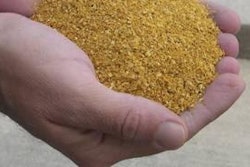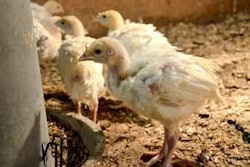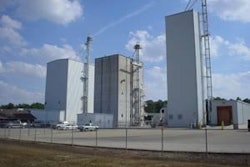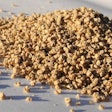The availability of antibiotics in poultry production depends on greater understanding of their risks and benefits. The regulatory status and use of antibiotics in poultry production were addressed in research presented at the annual meetings of the Poultry Science Association, American Association of Avian Pathologists and the American Veterinary Medical Association.
Topics covered in one of the symposia ranged from the effect of antibiotics in poultry on consumer shopping, the need to educate people on the differences in the way that antibiotic use is reported, the current use of antibiotics in poultry, and the discussion of the possible ways that antibiotics will be administered and their use monitored in the future.
Three classes of antibiotic usage
One of the first things to understand is that antibiotics can be classified into three uses which include therapeutics, disease prevention and growth promotants. An antibiotic is a chemical produced naturally by a bacteria or fungus to inhibit the growth of neighboring bacteria, where antimicrobials include both the antibiotics and those compounds that are manmade, like sulfa drugs.
Preventative growth promotants are often added to the feed to improve feed efficiency. These antibiotic feed additives are used at low-dose, therapeutic levels to decrease organisms such as Clostridium perfringens that cause necrotic enteritis. In addition to preventing subclinical C. perfringens, the growth promotants may have a benefit in food safety, as found in two studies by Dr. Scott Russell at the University of Georgia which demonstrated that birds with airsacculitis that were not given antibiotics were significantly higher in Campylobacter and Salmonella. There are situations where animals do contract infections that require therapeutic antibiotic administration. This is not only important to the production aspects of the food animal but also is critical in terms of animal welfare.
Antibiotic resistance misunderstood
The threat of organisms developing resistance to antibiotics used in human medical treatments is one of the biggest concerns raised in this debate. Research on antibiotic resistance continues to help us better understand the factors that impact this mechanism. Consumers armed with their power of purchasing choice have also greatly influenced the amount and depth of research on this topic, by insisting on antibiotic-free and reduced antibiotic use in the animals for food choices. Media sources have put a heavy emphasis on antibiotic use in food animals and its potential impact on antibiotic resistance. However, there are other factors that can affect the development of antibiotic resistance, which include, but are not limited to, human medical use and perhaps even practices of sanitation and disinfection.
The use of antibiotics as preventative growth promotants is probably the most misunderstood by the general public. Many people interpret the use of antibiotics to be the same, whether it is a therapeutic treatment of disease or preventative control of subclinical disease such as necrotic enteritis. Several speakers at this symposium shared data from various sources both domestic and international, which indicated that data comparisons were not comparing apples to apples. When reading the summaries that have been published by both domestic and foreign organizations on antibiotic use in food animals, the reader should be aware of whether the reports include one or a combination of the three antibiotic categories. For example, some reports may only include therapeutic and preventative growth promotants, whereas others will include therapeutics, preventative growth promotants and ionophore coccidiostats.
Veterinary Feed Directive
One regulatory step that is currently being taken by the FDA (Draft Guidance Document No. 209) to restrict antimicrobial drugs in food producing animals is to limit their use to situations that do not include the label for growth promotion or performance enhancement. The new FDA guidance will also require greater veterinary oversight. This means that anytime antibiotics are utilized in feed, a veterinarian will have to sign authorization forms called a Veterinary Feed Directive.
For many companies the oversight task alone could dominate a veterinarian’s time, reducing their time and effectiveness in monitoring flock health. The FDA is aware of this situation and is working with the American Feed Industry Association and the AVMA to make the VFD process more workable while still protecting animal health. It is believed it will also protect humans by reducing the potential of antibiotic use in food animals, causing increased resistance in human bacteria.
Increased poultry production costs
Antibiotic use in the poultry industry has decreased over the last decade. Companies are striving to utilize fewer antibiotics in feeds, and they are using genetic selection, bird management and house sanitation to reduce the load present of disease-causing organisms. However, even with these steps, there are concerns that the cost of producing chicken will increase because of the decreased use of antibiotics. It might be from a variety of causes such as increased incidence of disease, decreased feed efficiency due to the omission of growth promotants, or increased costs related to disinfection and sanitation procedures to reduce disease-causing organisms.
In the end, there are still situations that will require the use of therapeutic antibiotics in poultry flocks that have infections. Many companies are voluntarily removing preventative growth promotants from diets, but the debate will continue on how these actions will impact antibiotic use and resistance in the future.




